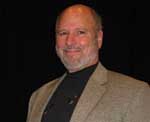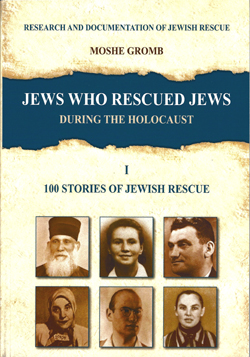Jews Who Rescued Jews During the Holocaust: 100 Stories of Jewish Rescue by Moshe Gromb, Nadav Book, 2020, Israel, 132 pages, available via Amazon.

 BOYNTON BEACH, Florida — A remarkable book about the unknown, the unbelievable, a book about life, not death.
BOYNTON BEACH, Florida — A remarkable book about the unknown, the unbelievable, a book about life, not death.
I never heard of Jews attacking an Auschwitz bound train transporting Jews to extermination and liberating them. Yet, it happened!
Jews who Rescued Jews During the Holocaust is an extraordinary initial publication of the compiled research of Moshe Gromb. The work is precisely summarized, factual, clinical, telling the stories of 100 of the over 2,000 harrowing stories he has collected.
Critically, only 59 pages of the 132 are dedicated specifically to the Jewish rescuers. In another nine pages, Gromb, in one or two paragraphs, lists the forms of rescue. Some forms of rescue are almost unbelievable, Jews rescuing Jews from inside the camps and from inside Nazi prisons.
The balance of the book, presented through supporters’ comments, has a personal tone, a call to action, that rattles the Jewish soul. It is about the baffling, controversial, long time resistance of Yad Vashem, and Israeli culture to documenting, researching, honoring, and remembering Jews who rescued Jews during the Holocaust.
The book opens with a Why and ends with a Why.
Petty complaints about the book are periodic unevenness in the translation from Hebrew to English, the book’s formatting, and arrangements, name spellings that make cross referencing difficult. The complaints are minor in perspective to the message.
Most of us grew up with the assured belief Jews were led passively to the Holocaust gas chambers, like sheep. We felt reborn as Israel grew strong. We all swore never again, now that we have a Jewish Army. Jews will never again die as sheep.
We swelled with sad pride as we recalled the Warsaw Ghetto uprising. However, the well-known story of the Warsaw Ghetto uprising is not in the book.
What is in the book is a story about an incident that occurred April 19, 1943, the same day that the Warsaw Ghetto uprising began. Twelve hundred kilometers to the west in Belgium, an extraordinary fight, also between un-equals, took place.
Auschwitz-bound Belgian transport #20 carrying 1600 Jews to extermination was attacked by two Jews, Youra and his brother Alexander Lifshitz, supported by two non-Jewish friends. The Belgian Resistance had declined to help.
The Jews attacked the train to liberate, to save Jews from being taken to their death in the gas chambers and ovens of Auschwitz.
The attack on Transport XX to Auschwitz to save Jewish life is almost completely unknown, uncelebrated, certainly not memorialized. No movies, no books, no songs have been written about the fight to liberate Transport XX.
Gromb also tells the story of Dr. Gisella Perl, a Jewish obstetrician inside the death camps. She worked with the Nazi authorities to “manage” the health care of the Jews in the Camp. At night she was an abortionist of Jewish women.
At extreme risk of her own life, working with virtually no medical equipment, Dr. Perl aborted Jews women, ending their pregnancies.
Nazi policy was direct. If Dr. Perl had reported that a Jewish girl admitted to the camp was pregnant, she was murdered immediately. Dr. Perl was forced to do what no one would want to do. She was forced to kill life to save life.
Her story is in the book.
Each story in the book is inspiring and chilling at the same time.
For over twenty years, an annual ceremony of honor is held at the Pillar of Fire memorial in the Jerusalem Forest. The magnificent Holocaust -themed sculpted pillar is sited at an extremely obscure location. Haim Roet, himself a child survivor of the Holocaust whose life was saved by a Jew, began organizing with B’nai B’rith International of Jerusalem a special day of remembrance. A certificate of thank you to a Rescuer or surviving family members is given. 330 Rescuers have been identified and honored.
Yad Vashem still refuses to recognize Jews who rescued Jews during the Holocaust. They said the rescuers did nothing more than what they were supposed to do. It is an absurd response.
1953, the law creating Yad Vashem authorized honoring non-Jews who saved Jews, not Jews. The shame of the survivor, the focus on the new Israeli State, and its nascent army was what mattered. Most survivors did not and would not talk about what they did during the War or how they survived for many years to come. Most knew they were in no position to save even barely themselves.
For those who did save, they saved thousands, possibly hundreds of thousands of Jews. Worlds of untold numbers are alive today because of them. They did what they did not have to do.
We know the stories of only a tiny few of the acts of Jewish heroism to save their fellow Jews. Most rescue stories, even if successful, were consumed in the Holocaust and are known only to God.
If you ask a survivor why they lived, while others died, most will have no idea. Perhaps their survival has something to do with a known or even unknown rescuer.
Thank you, Moshe.
*
Jerry Klinger is president of the Jewish American Society for Historic Preservation.
Pingback: Chronicler tells of Jewish rescuers during Holocaust | B'nai B'rith Budapest Páholy
Have you heard of Jews being rescued from the camps by ransom being paid by relatives and or friends?